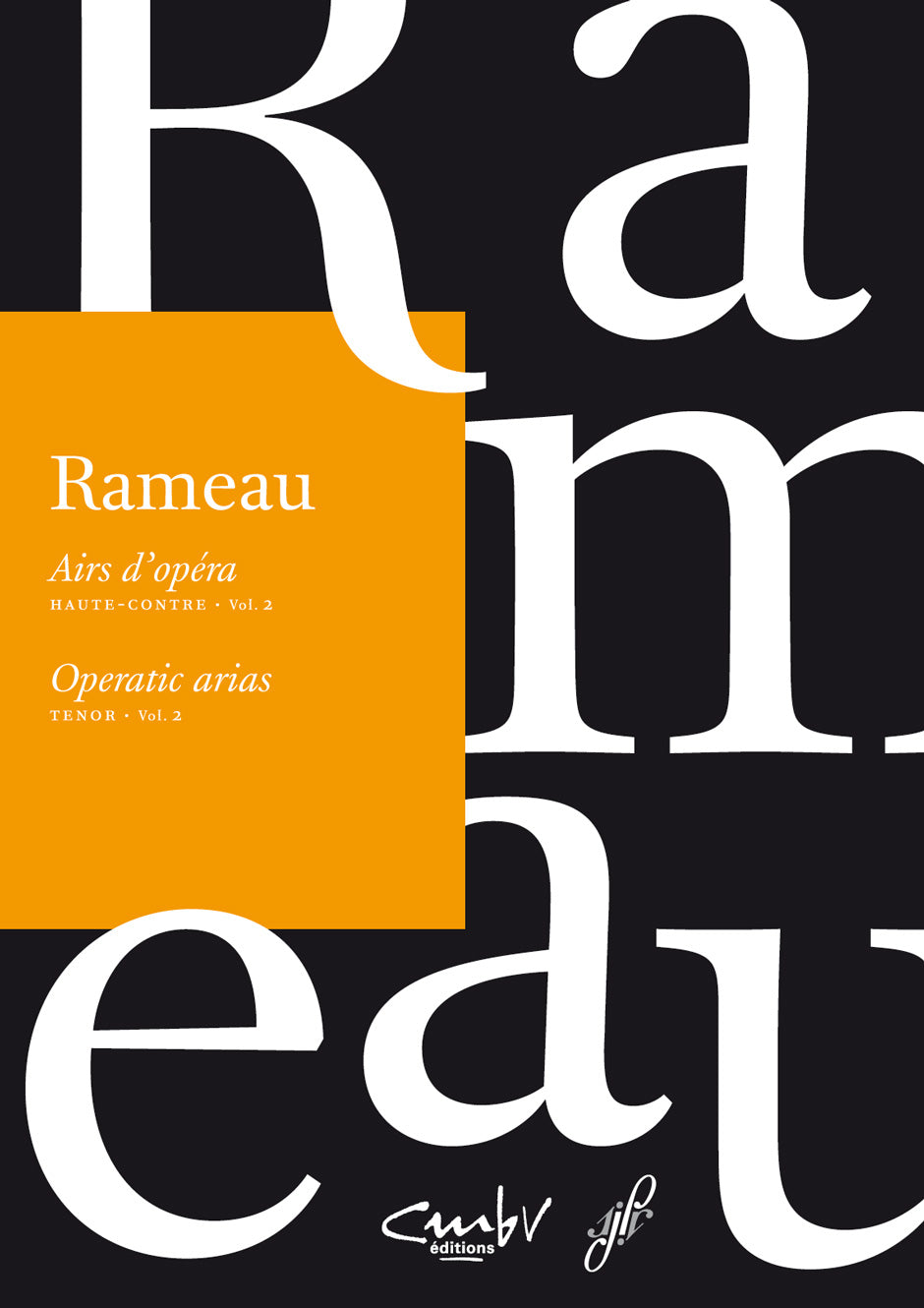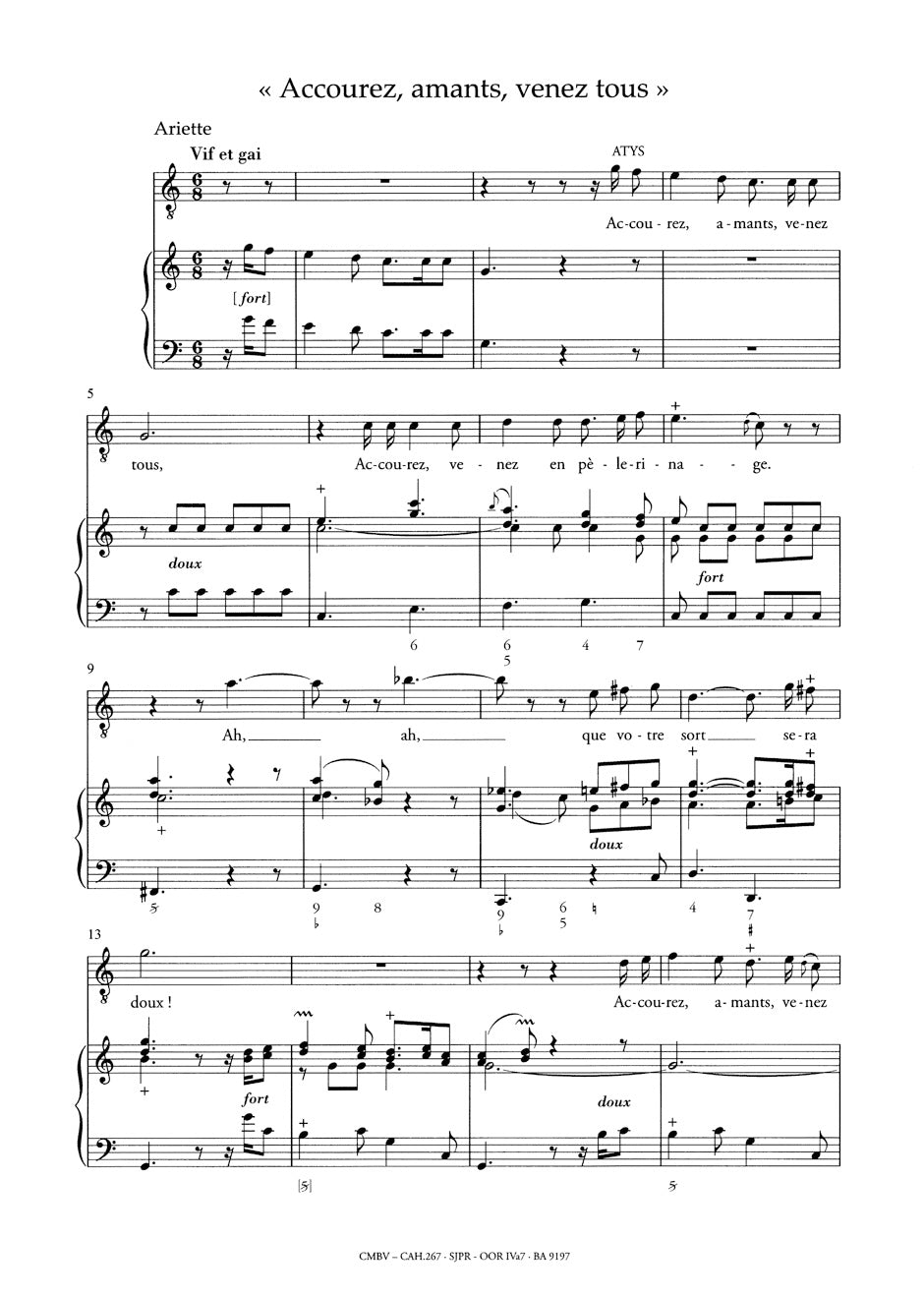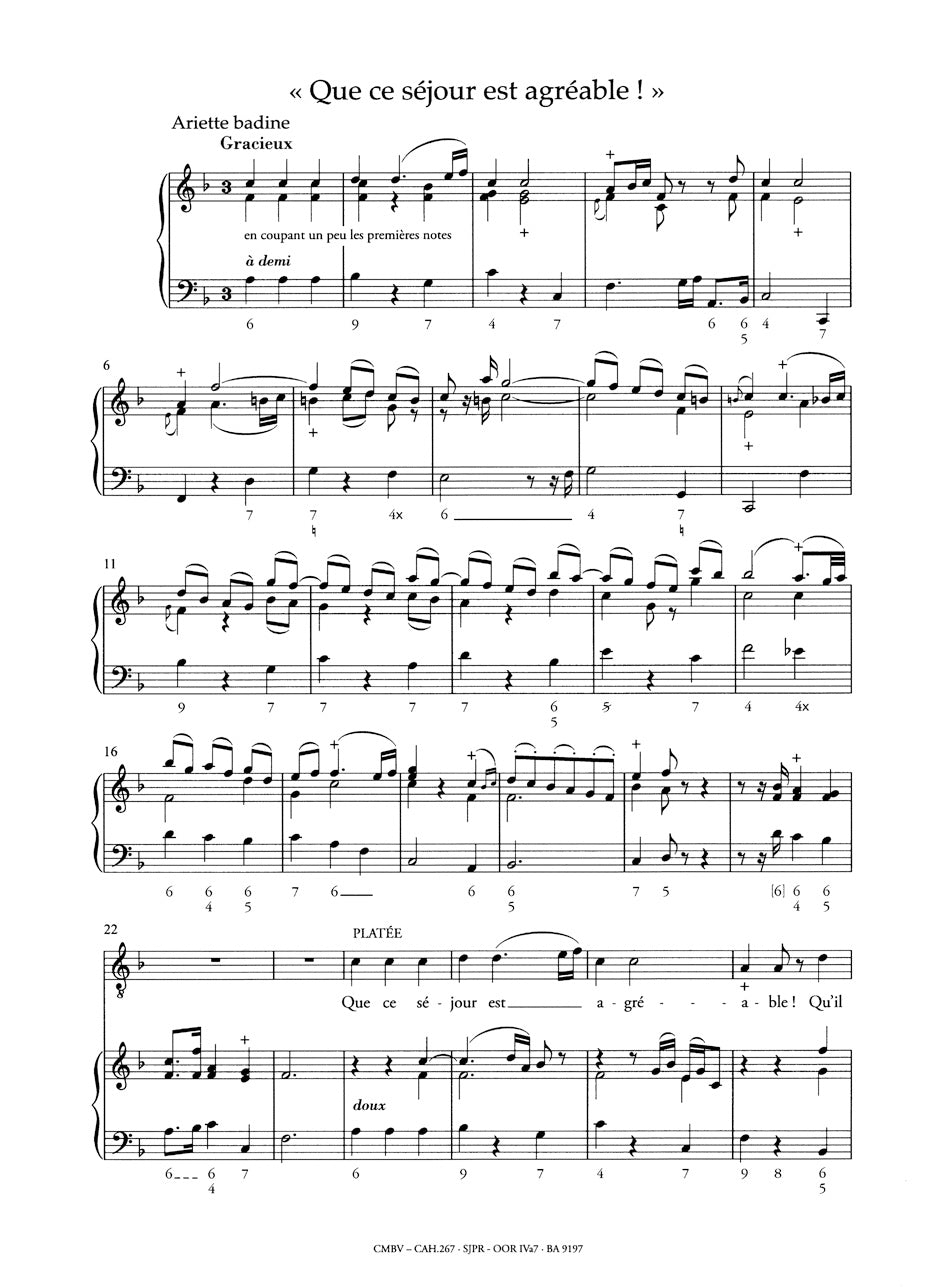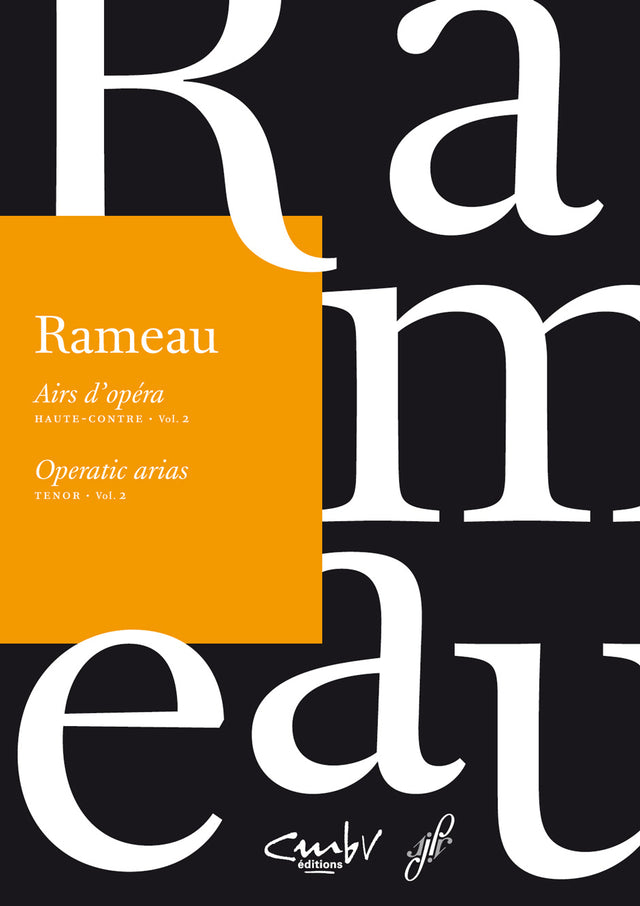Rameau: Operatic Arias for Tenor - Volume 2
Expected to ship in about a week.
- Composer: Jean-Philippe Rameau (1683-1764)
- Format: Vocal Score
- Instrumentation (this edition): Piano Reduction, Tenor
- Originally for: Opera
- Work Language: French
- ISMN:
- Size: 8.3 x 11.7 inches
- Pages: 149
- Urtext / Critical Edition
Description
This volume contains the second half of the great monologues, arias and ariettas that Rameau wrote for haute contre, and which are sung today by a high tenor.
Works:
- Accourez, amants, venez tous from Les Paladins, RCT 51
- Le printemps from Les Paladins, RCT 51
- Lance, Armour, tes traits vainqueurs from Les Paladins, RCT 51
- Charmant Bacchus, dieu de la liberté from Platée, RCT 53
- Que ce séjour est agréable! from Platée, RCT 53
- Quittez, Nymphes, quittez vos demeures profondes from Platée, RCT 53
- Fatal Armour! cruel vainqueur! from Pigmalion, RCT 52
- Règne, Armour, fais briller tes flammes from Pigmalion, RCT 52
- Pénétrez les humains de vos divines flammes from Le Temple de la Gloire, RCT 59
- Venez, suivez-moi, troupe aimable from Le Temple de la Gloire, RCT 59
- Ces oiseaux par leur doux ramage from Le Temple de la Gloire, RCT 59
- Charmes des coeurs ambitieux from Zaïs, RCT 60
- À mes désirs que votre ardeur réponde from Zaïs, RCT 60
- Vole, enchate mon coer, espoir délicieux from Zaïs, RCT 60
- Aimable et cher objet de la plus vive ardeur from Zaïs, RCT 60
- Dans nos feux prenons pour modèle from Zaïs, RCT 60
- Règne à jamais, Amour, lance tes traits from Zaïs, RCT 60
- Aimez-vous, aimez-vous sans cesse from Zoroastre, RCT 62
- Aimable et digne objet de l'amour le plus tendre from Zoroastre, RCT 62
- Accourez, jeunesse brillante from Zoroastre, RCT 62
Publishers use a lot of words to describe what they sell, and we know it can be confusing. We've tried to be as clear as possible to make sure you get exactly what you are looking for. Below are descriptions of the terms that we use to describe the various formats that music often comes in.
Choral Score
A score for vocalists that only contains the vocal lines. The instrumental parts are not there for reference. Generally, cheaper than a vocal score and requires multiple copies for purchase.
Facsimile
Reproductions of the original hand-written scores from the composer.
Full Score
For ensemble music, this indicates that the edition contains all parts on a single system (there are not separate parts for each player). In larger ensembles, this is for the conductor.
Hardcover
Hardbound. Generally either linen-covered or half-leather.
Orchestral Parts
Similar to a wind set, this is a collection of parts. In the case of strings, the numbers listed are the number of copies included, though generally these are available individually (often with minimum quantities required).
Paperback
When publishers offer multiple bindings (e.g. hardcover) or study scores, this is the "standard" version. If you're planning to play the music, this is probably what you want.
Performance / Playing Score
A score of the music containing all parts on one system, intended for players to share. There are not separate parts for each player.
Set of Parts
For ensemble music, this indicates that there are separate individual parts for each player.
Solo Part with Piano Reduction
For solo pieces with orchestra, this is a version that contains a piano reduction of the orchestra parts. For piano pieces, two copies are typically needed for performance.
Study Score
A small (think choral size) copy of the complete score meant for studying, and not playing. They make great add-ons when learning concertos and small chamber works.
Vocal Score
A score prepared for vocalists that includes the piano/organ part or a reduction of the instrumental parts.
Wind Set
For orchestral music, this is a collection of wind and percussion parts. The specific quantities of each instrument are notated.
With Audio
In addition to the printed music, the edition contains recordings of the pieces. This may be an included CD, or access to files on the internet.
With / Without Fingering (Markings)
Some publishers prepare two copies - a pure Urtext edition that includes no fingering (or bowing) suggestions and a lightly edited version that includes a minimal number of editorial markings.





